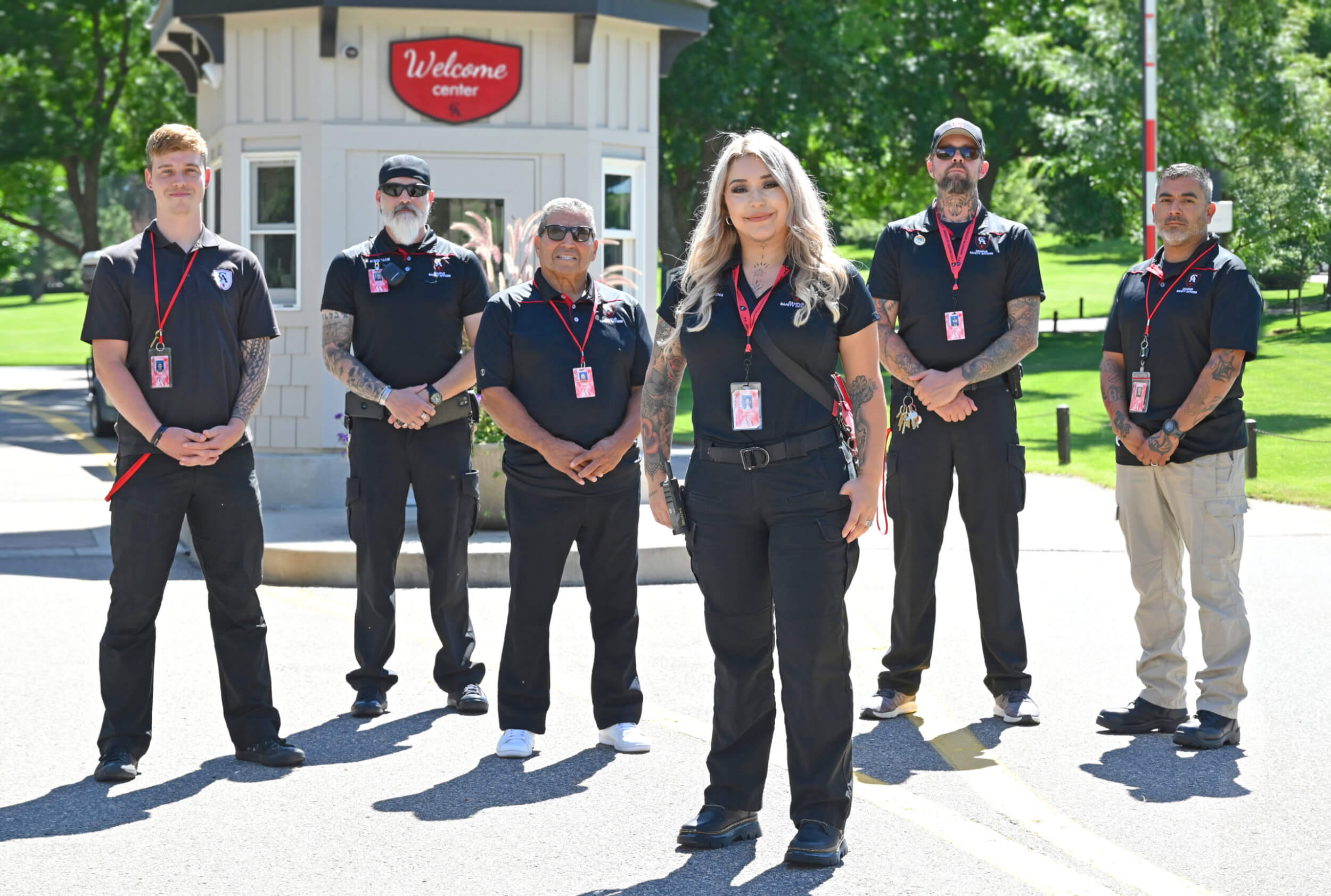Colorado Academy’s Director of Campus Safety & Security, Miriah Medina, is not the kind of person who likes to be in the position of reacting to situations after the fact; when it comes to safety, Medina believes in being proactive, in knowing that her team and the community are prepared and protected the best they can be. And that’s the foundation of her approach to safety on the CA campus: working with the school community to build a culture in which human care and connections, common-sense practices and policies, and the latest technologies combine to make it far less likely that bad things could ever happen here.
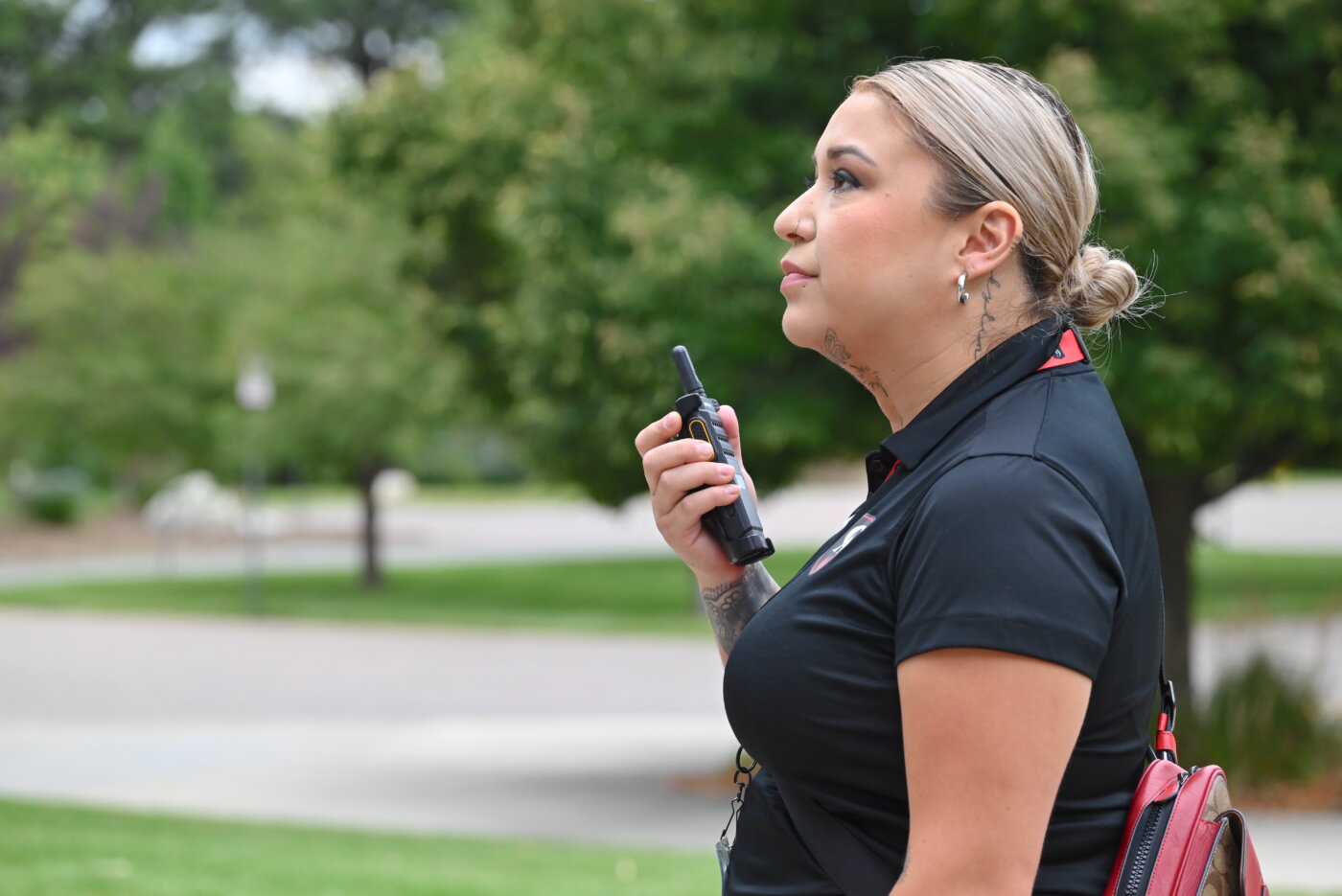
As a former investigator and marshal executing felony warrants for the Denver County Courts, as well as a Denver Deputy Sheriff and Boulder Police Officer, Medina’s certainly seen her share of the bad. “In law enforcement, you’re usually encountering people on the worst day of their lives,” she acknowledges. But her college degree was in social work, and it’s a lifelong concern for people’s well-being that fuels her dedication today. “That social worker lives in me,” she says.
Not surprisingly, a holistic, people-centered perspective informs all the measures Medina and her team take to ensure a safe and secure CA campus. The goal, she says, is “creating an environment where students, teachers, and families can be together, learn, and succeed in the best ways possible.” That means not only amping up the sophisticated technologies that monitor and protect campus activities, but also assembling a security team of compassionate, experienced professionals eager to collaborate with children, teachers, and school staff in nurturing an environment of care.
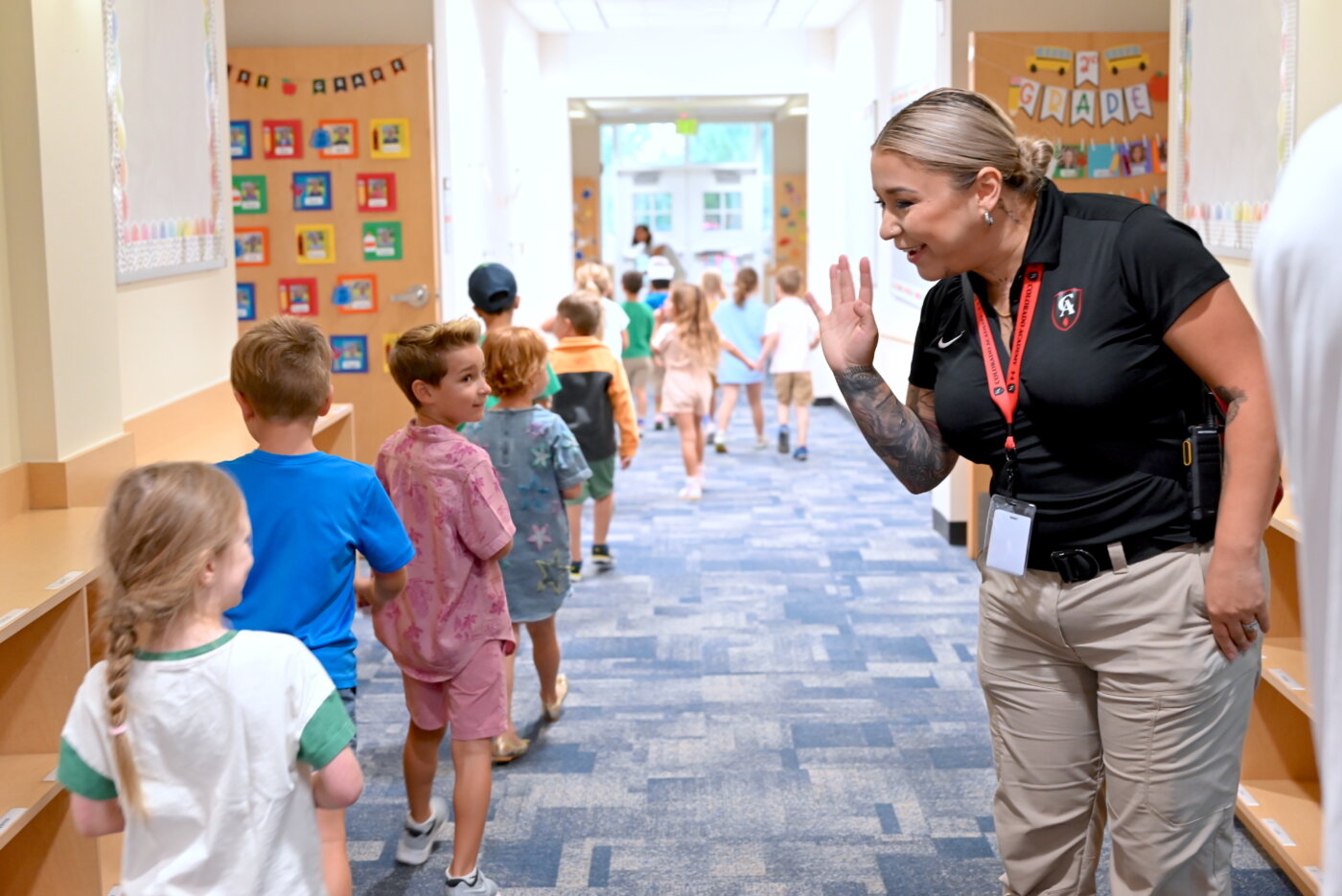
“School safety’s not about policing our students, faculty, and staff,” she insists. Instead, it’s about being present and building relationships. “We all share the same mission—to help each other in any way that we can.”
People who care
Still, just like she does, every member of Medina’s team comes to CA with an extensive law enforcement or military background. In part, that’s so she can be sure that in case something catastrophic were to happen, each has proven they’re prepared to run toward danger, not away from it. As Campus Safety Officer Andrew Kirshbaum ’89 makes clear, “The fact that we have so much field experience within this work group is truly impressive—and it is highly unusual for a school of CA’s size.”
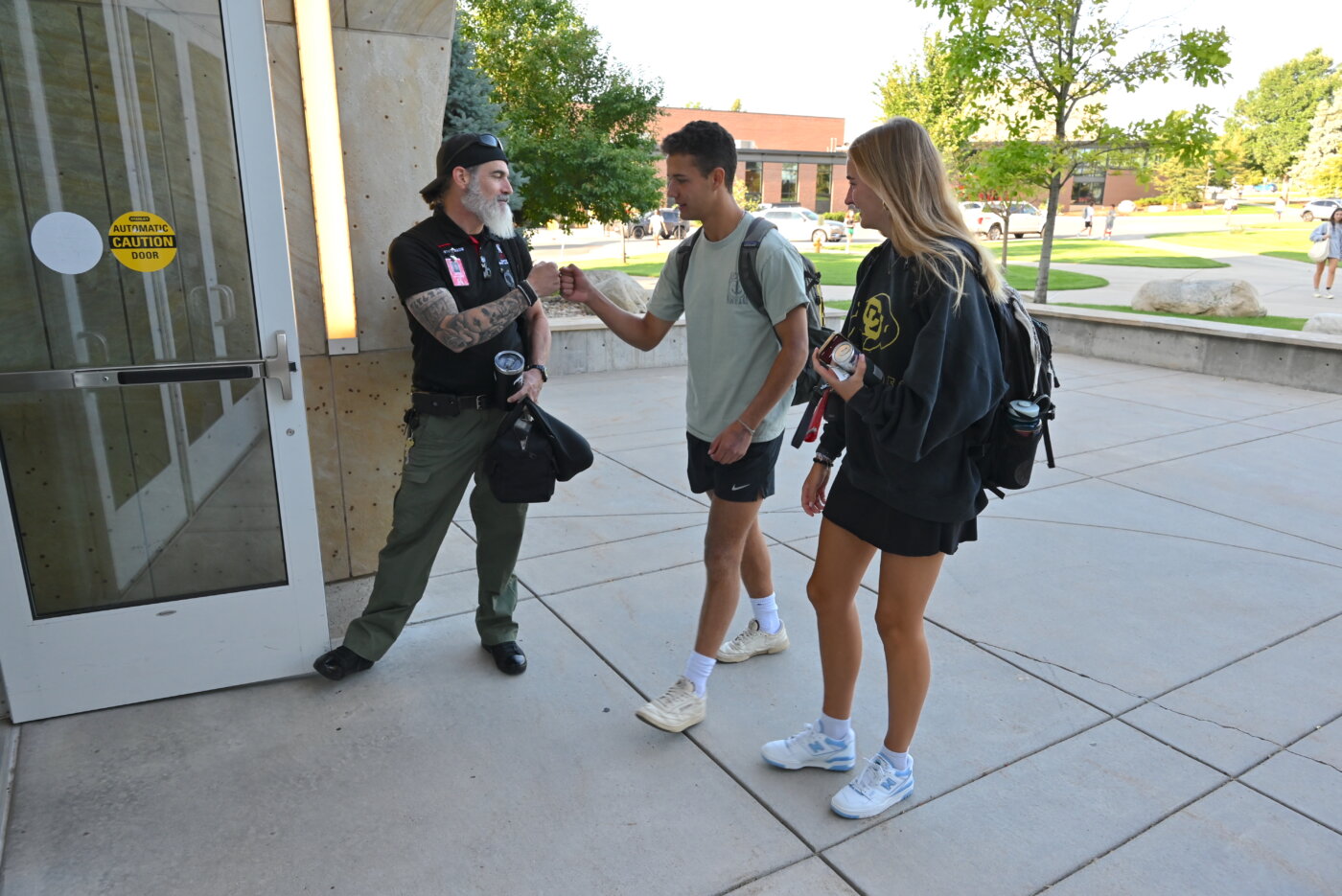
Kirshbaum, a veteran of the team who is stationed in the Upper School, was a Boulder Police Officer alongside Medina for over a decade, and worked in Boulder’s Special Victims Unit as well as serving as a hostage crisis negotiator, along the way earning the Lifesaving Award. His colleague in the Lower School, Scotland native Andy Barnard, also earned the Lifesaving Award as a Littleton Police Officer and previously served with the British Army in Afghanistan and as a Security Officer and coach at Cherry Creek High School. Middle School Safety Officer Leonard Govea, a 20-year U.S. Army veteran, was Lead Security Officer at Ponderosa High School in Douglas County for 10 years and is a certified trainer for the Standard Response Protocols utilized by CA and other schools. And finally, Tim Pendarvis, who manages the Welcome Center at CA’s main entrance, is an Air Force veteran as well as a small business owner and coach.
In addition to looking for a track record of service when putting this group together, Medina made sure each of these members of the core Safety & Security Team would be a good fit for CA. Notably, she had them all meet with a neuropsychologist and take a psychological exam as well as complete a physical and background check. “I want my team to be active and forward-facing in the community,” she explains, “not just sitting behind a desk.” A friendly, outgoing personality is key. “You have to be confident in yourself as well as approachable to genuinely engage with kids—whether you’re in a Pre-K classroom or walking through an Upper School hallway filled with Seniors,” Medina says.
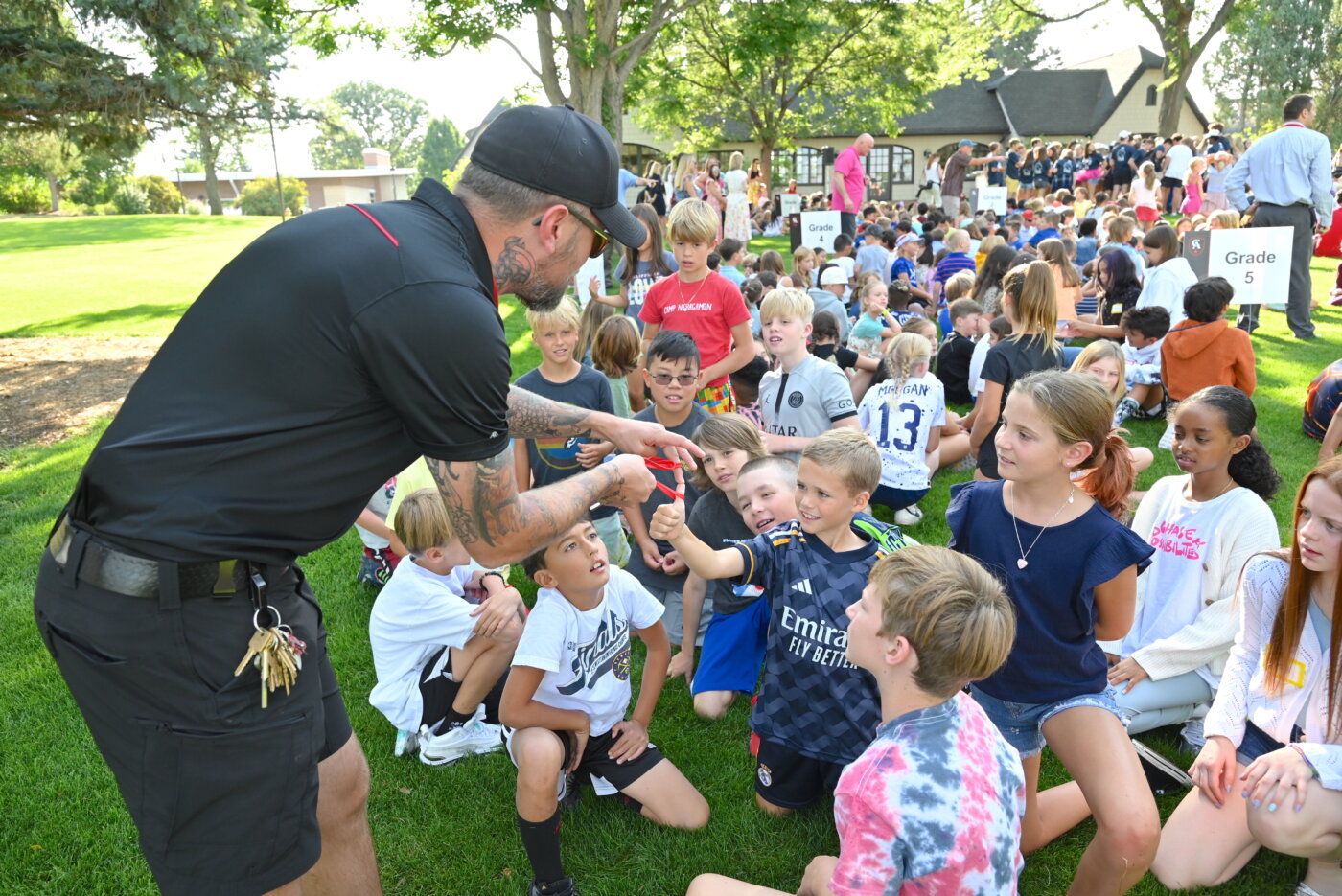
Each armed team member is strategically stationed around the campus to serve as the expert and main point of contact in a particular area. Kirshbaum, Govea, and Barnard, the officers supporting the three divisions of the school, work closely with students, faculty, and counselors in each building, along with the CA health team, to develop an intimate understanding of and lend a hand with any safety concerns or incidents that merit attention. At the Welcome Center, Pendarvis acts as an information hub, becoming familiar with families and their vehicles at pick-up and drop-off, authorizing campus visitors, and managing parking and the flow of traffic.

Each day, they share their knowledge during a morning briefing, which Medina runs like those you might see within a police department. The purpose is to ensure that everyone’s aware of what to expect that day—whether to be alert during a special assembly, watch for traffic as fans arrive for a performance or sports contest, or be prepared for one of the many other activities and occasions that happen on CA’s campus year round—as well as to confidentially discuss any emerging concerns about particular students or anyone else in the community.
Medina reiterates, “Those briefings aren’t about us micromanaging everything that goes on here. They are about us making ourselves available as a resource. At any given moment, where are our services most valuable and most needed?”
Counselor collaboration
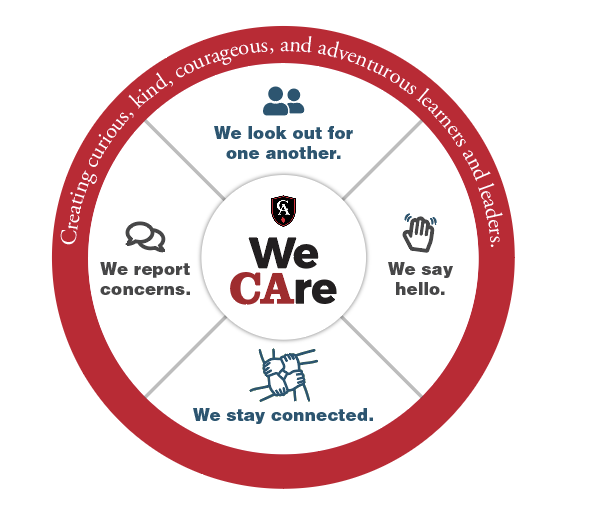
Critical to these discussions is the collaboration between the Safety & Security Team and the school’s four full-time counselors. Meeting regularly with Medina and her Safety Officers as well as with educators in all three divisions of the school, CA counselors are sharply attuned to the social and emotional well-being of every student, and take action when they recognize a child who may be struggling or at risk. That includes reaching out to the student as well as teachers, advisors, and coaches at the first sign of trouble; if the concern is more serious, counselors alert Medina and her team to be on the lookout.
According to Upper School Counselor Kate O’Donnell, “If a student’s in the parking lot when they shouldn’t be, or not in class when they should be, the Safety & Security Team can help us find an opportunity to go walk and talk with the student to see what’s going on.”
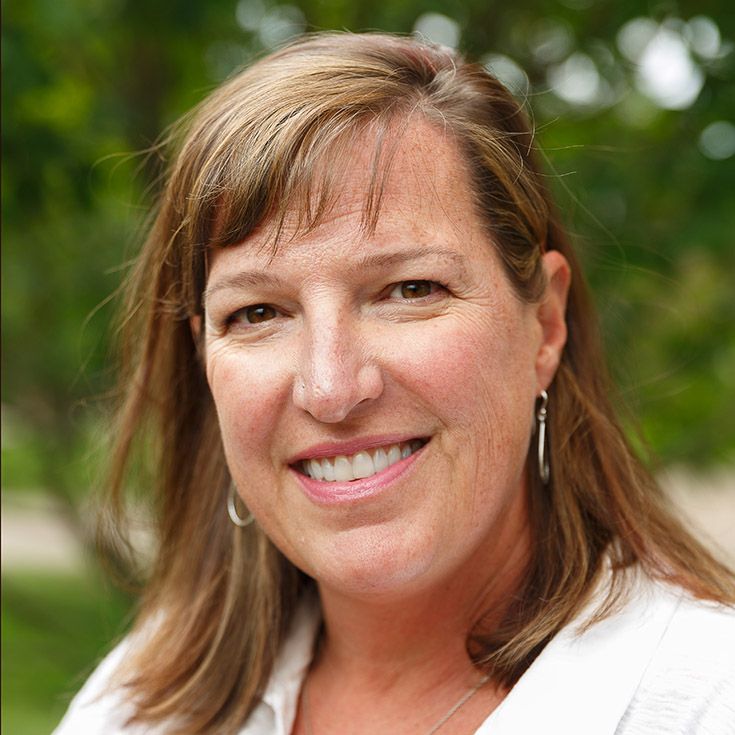
But well before that point, emphasizes O’Donnell, both counselors and Safety Officers count on the intentional support structures CA has in place at all grade levels to nurture a caring, connected environment that can avert the most worrying issues. At the beginning of each school year, counselors meet with every new student to ensure they feel known and seen, and throughout the year, they visit classrooms, host guest speakers, lead advisory meetings, and offer workshops that are designed to bring community members closer, establish trust, and instill the importance of speaking up and sharing any concerns about safety.
“There’s almost an expectation here that you come forward with a concern about a peer,” O’Donnell says. “While kids will often come to us with a worry about themselves, they’ll just as readily talk to us about a concern they have about someone else. For the most part, when students come and tell me that they’re worried about someone, they’ve already told that person.”
Students can even share a concern anonymously, using the Colorado Safe2Tell hotline, which every child at CA learns about through sessions with the counselors and colorful signs posted in every classroom and hallway. CA’s Director of Counseling Services, Upper School Counselor Liza Skipwith, says that kids using Safe2Tell have made a real impact. She cites one example of a student who heard a classmate talking about harming themselves. The student made a report through Safe2Tell, which then went to Skipwith, who was able to follow up with the classmate, the Safety & Security Team, and the local police.
“Our students are literally saving lives,” she emphasizes.
Eyes in the sky
If a culture of shared concern is the heart of safety at CA, then new and improved physical and technological security measures are the bones, muscles, and nerves that keep the entire campus protected. Perhaps most impressive among these is the array of 37 video cameras (with more to come) watching over every campus entrance, building perimeter, green space, athletic field, parking area, and roadway. There are even cameras at the new REDI Lab Aimee and Jonathan Coleman Center, located in Denver’s Mariposa Arts District. Additional cameras to monitor more interior and exterior spaces are on the way.

Recording video around the clock, the system allows Medina or a team member both to keep tabs on the comings and going of people and vehicles in virtually any location on campus, and to review detailed multi-angle footage in the event of any kind of incident, be it an unauthorized visitor or a fender-bender in the parking lot. Even more powerfully, a software platform guided by artificial intelligence links together all the cameras, allowing for recognition and continuous tracking of license plates and faces from one location to another; the system can send Medina automated alerts about flagged events no matter where she may be. So even when no one’s actively watching, everything’s being seen and analyzed.
Another computer-controlled system secures entry gates that can only be opened by RFID car stickers issued to faculty and staff or by a Safety & Security Team member, and nearly every exterior door on campus is now locked, tied into the same computerized network. Over the past two years, badge-activated access control has been added to all major buildings, and students, faculty, and staff have begun carrying photo badges throughout the day to gain entry. The system means that facilities are protected 24/7, with the Safety & Security Team continually aware of when, where, and by whom doors and gates are opened.
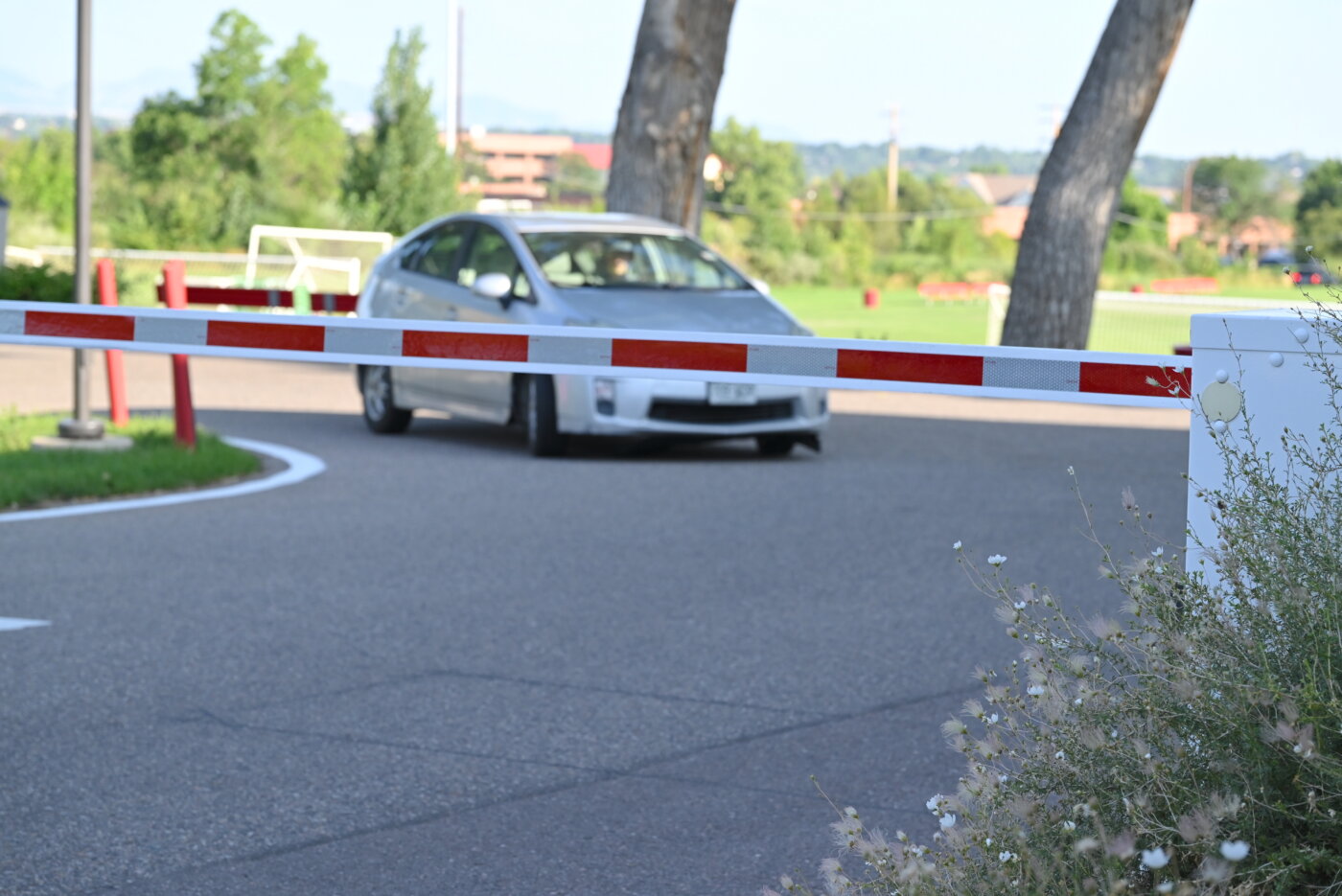
Adding yet more layers to the campus-wide safety improvements are better emergency radio communications via new roof-mounted repeaters, reorganized parking for an increasing volume of students, faculty, staff, and visitors, and new gates and safer traffic patterns in critical locations such as Early Childhood and Pre-K pick-up and drop-off areas. Especially with a fully locked campus, all the changes signal a big culture shift for CA, Medina acknowledges.
“We know security isn’t convenient whatsoever,” she says, “and sure, it would be nice if we could still have that completely open campus. But with the world the way it is today, we have no choice but to be proactive and focused on prevention.”
Answering the ‘why?’
Frequent communication is one way Medina helps children and adults alike understand and adapt to a new reality where almost everyone, including parents, must pass through entry gates, wear identification on campus, and use a badge or a buzzer to enter buildings that are locked year round. Through detailed email messages to the entire community, classroom visits in every grade level, and a constant presence out and about on campus, Medina and her team reinforce the message that we all contribute to a safe and secure learning environment.
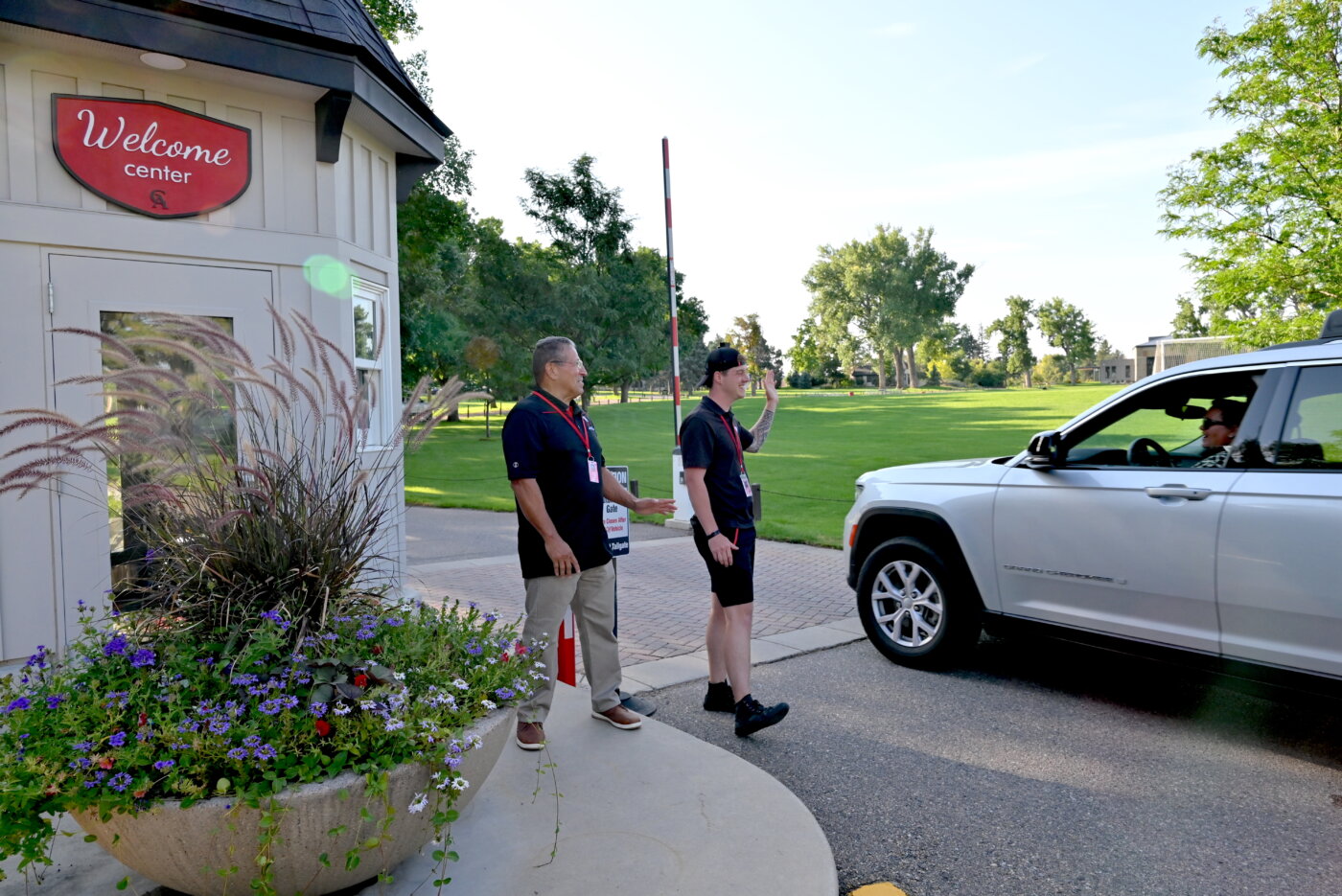
Educating students about safety is especially important to Medina, whose daughter is a CA Kindergartner. And communication and trust are essential when it comes to kids, too.
“With my daughter, I’m very up front; I’ve always emphasized open lines of communication,” she explains. “‘If you see something, say something,’ is such a key message for them. I want kids to feel empowered: If something doesn’t feel right, trust your gut and tell your teacher or another trusted adult.”
Teachers play a central role in the safety equation, Medina goes on. They’re well trained in CA’s emergency protocols, and above all, they have their students’ best interests at heart. “We’re all part of the same community, and we will do everything we can to keep them safe.”
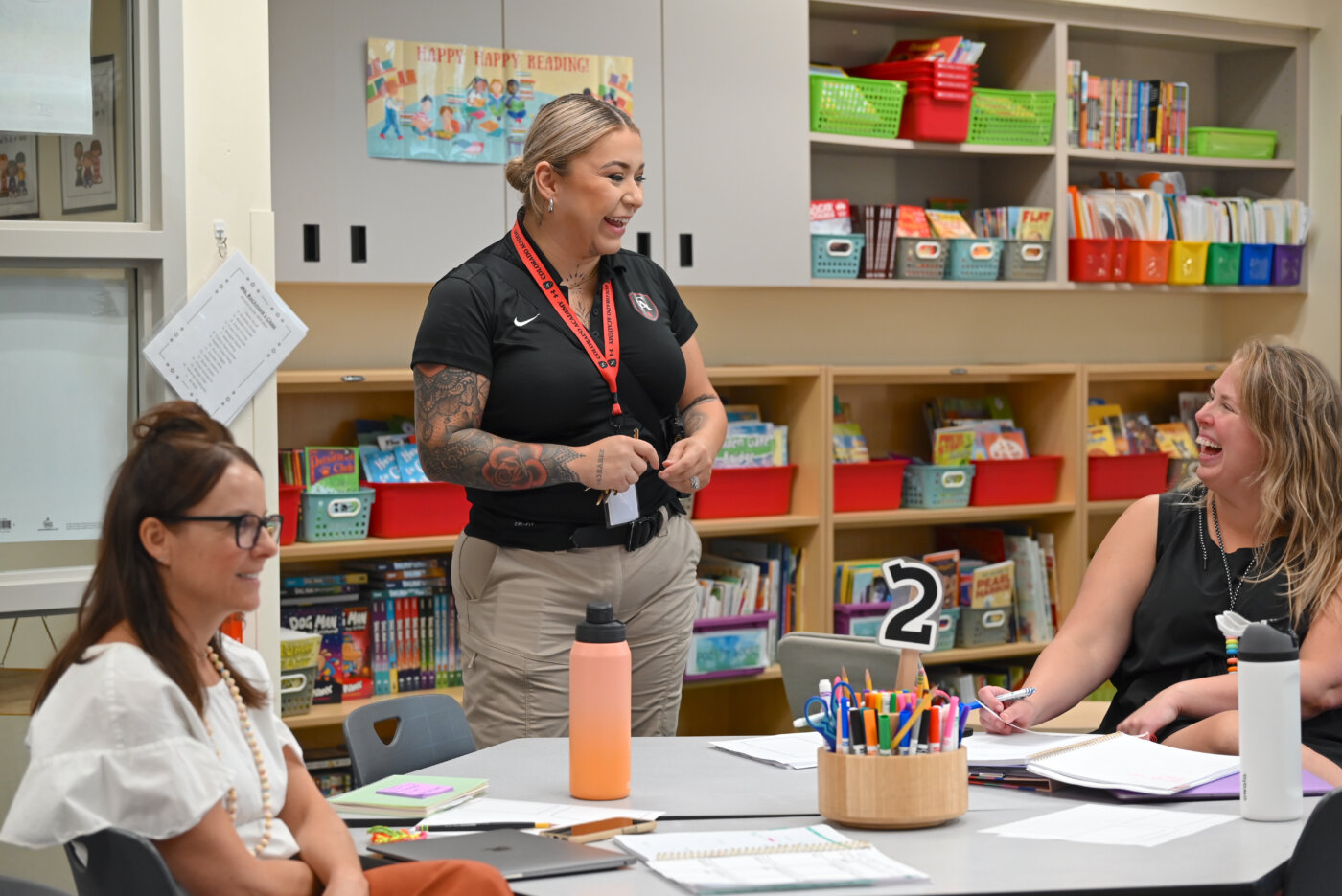
During their regular classroom visits, Safety & Security Team members underscore that connection, building relationships with children and teachers that may encourage them to come forward when something’s not right. “We want everyone to feel like they can let us know, ‘Hey, my friend’s acting a little off today—can you help or let someone know?’ We don’t want to be the people on campus they’re afraid of, the ones who get them in trouble when they do something wrong.”
What’s driving everything, Medina says, is the strategic effort to enlist the entire community in helping to avert the kind of violence and tragedy that are so often in the national headlines. While statistically, schools remain safe places for children, it’s hard not to be troubled by those seemingly constant reminders of potential danger.
“In my previous roles dealing with fugitives and bad guys, I was used to feeling my adrenaline at a sky-high level all day long,” she recounts. “Here that’s not the case. I get to spend my time working with people to make us all safer. I still think about that possibility of violence constantly, but here at CA I feel we’ve made real progress in helping the community understand why we’ve taken all these steps to be safer and more secure—and in helping everyone feel that now, the bad stuff is maybe that much farther away.”
Learn more about safety and security on the CA website or Resource Board for families.
